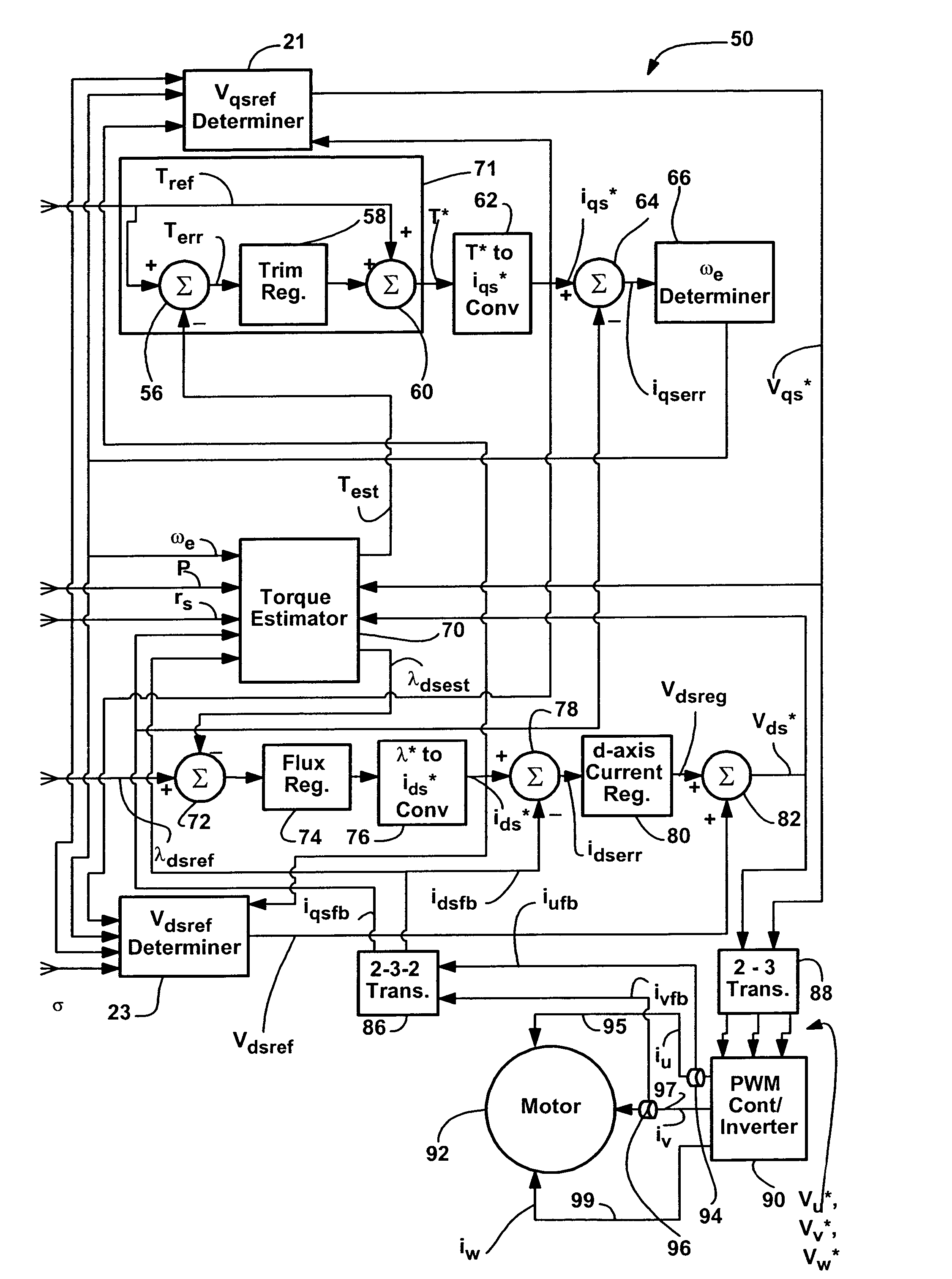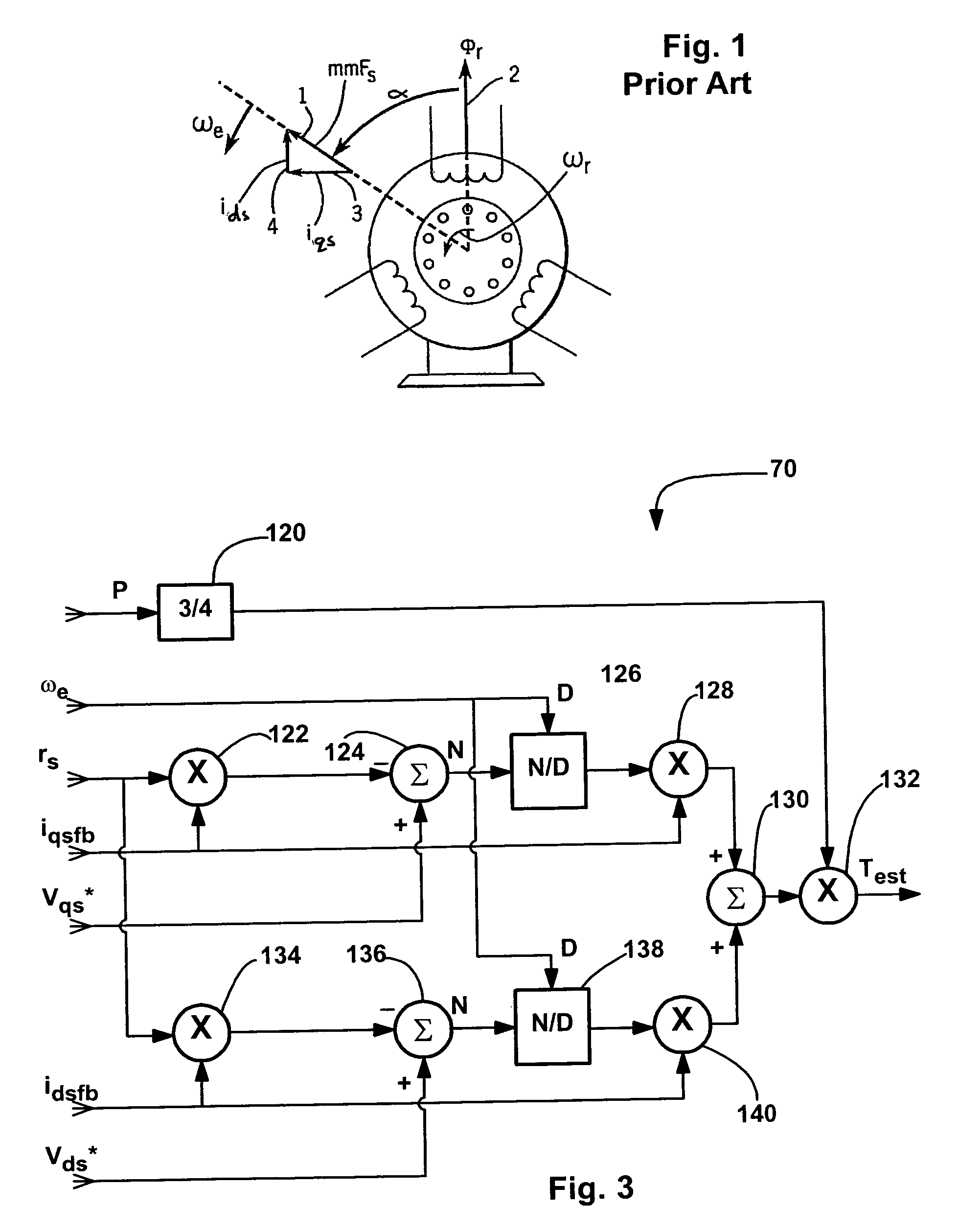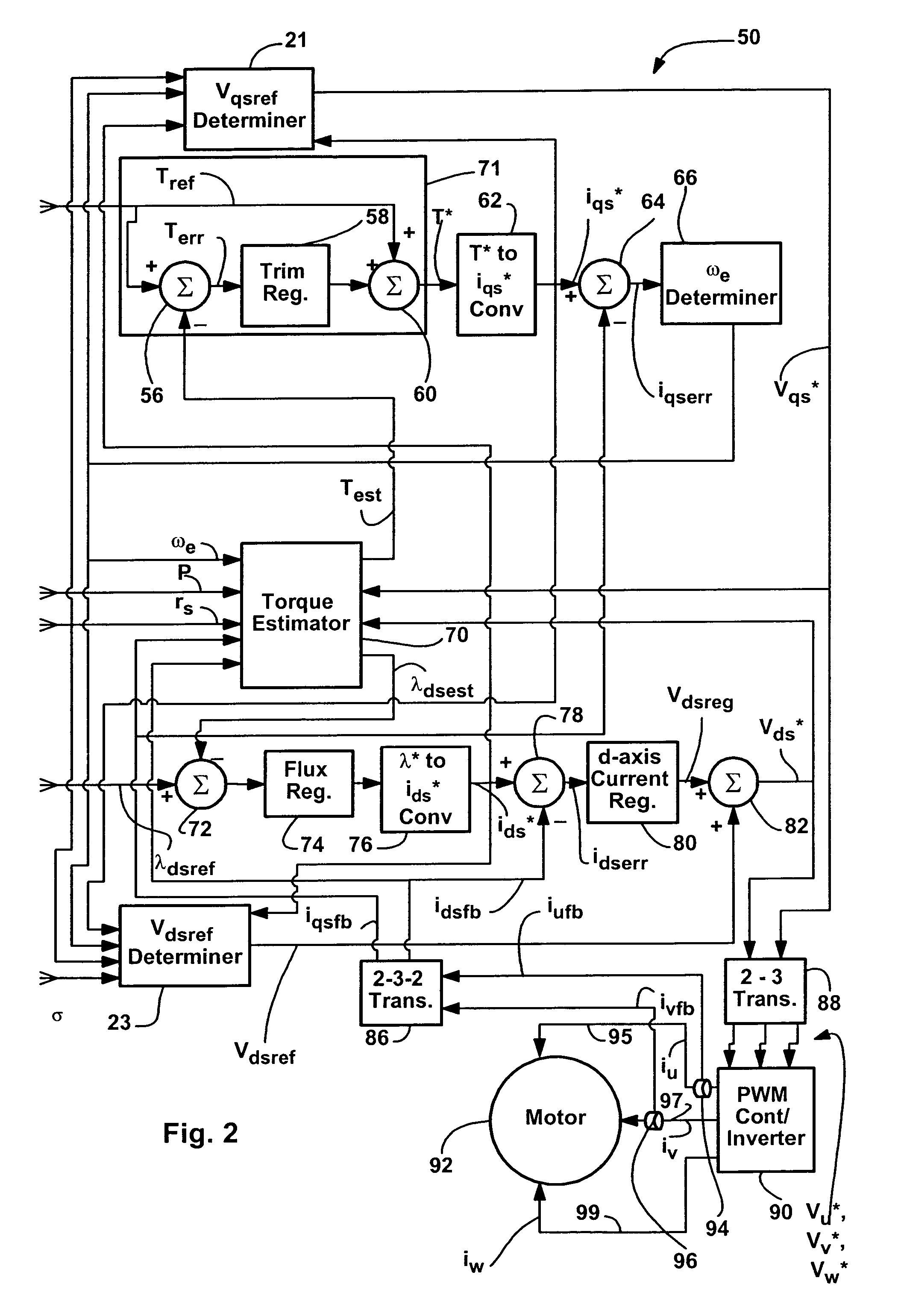Method and apparatus to regulate loads
a technology of torque regulator and load, applied in the field of controllers, can solve the problems of increasing the slip rate, increasing the rotor generated field and thus the force or torque between the rotor and the stator field, and the regulation scheme adopted is not very accurate, so as to achieve a simple and accurate torque regulator and easy to control system.
- Summary
- Abstract
- Description
- Claims
- Application Information
AI Technical Summary
Benefits of technology
Problems solved by technology
Method used
Image
Examples
first embodiment implementation
[0046]B. First Embodiment Implementation
[0047]Referring now to the drawings wherein like symbols and numerals are used to refer to similar elements throughout the several views and, more specifically, referring to FIG. 2, the present invention will be described in the context of an exemplary motor control system 50 that, in general, receives both a torque reference signal Tref and a d-axis flux reference signal λdsref and uses those two signals to generate AC voltages on three separate supply lines 95, 97, 99 linked to motor 92. System 50 includes various feedback loops that enable essentially instantaneous and real time control of torque applied to motor 92 so that the applied torque can be made essentially equal to the reference torque value Tref. In FIG. 2, two current sensors 94 and 96 (e.g., Hall effect sensors) are coupled to two of the three supply lines (e.g., 95 and 97) that are linked to motor 92 to sense currents passing therethrough and generate feedback current signals ...
PUM
 Login to View More
Login to View More Abstract
Description
Claims
Application Information
 Login to View More
Login to View More - R&D
- Intellectual Property
- Life Sciences
- Materials
- Tech Scout
- Unparalleled Data Quality
- Higher Quality Content
- 60% Fewer Hallucinations
Browse by: Latest US Patents, China's latest patents, Technical Efficacy Thesaurus, Application Domain, Technology Topic, Popular Technical Reports.
© 2025 PatSnap. All rights reserved.Legal|Privacy policy|Modern Slavery Act Transparency Statement|Sitemap|About US| Contact US: help@patsnap.com



